Gamification isn’t just for video games anymore. Today, it’s quietly changing how we learn, heal, and grow. If you’ve ever felt that tiny thrill from earning a badge, reaching a new level, or seeing your points add up—you already know how powerful it can be. What seems like simple fun is actually doing something much deeper. It’s guiding your brain, your behavior, and even your emotions in ways you might not expect.
At RoboBionics, we’ve seen firsthand how powerful gamification can be—especially in rehabilitation and recovery. But whether you’re recovering from an injury, helping someone regain movement, or building better habits in daily life, those little wins matter more than you think. Much more.
Let’s dive into why.
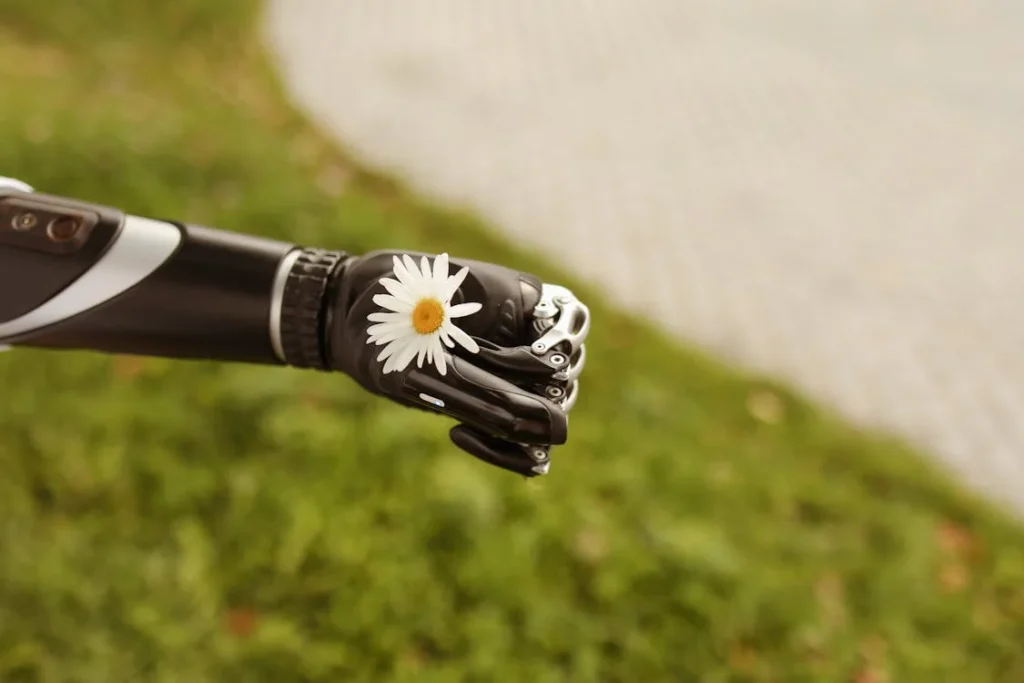
The Psychology Behind Points, Badges, and Levels
How Our Brain Reacts to Rewards
The human brain loves rewards. Every time you achieve something, no matter how small, your brain gives you a tiny burst of dopamine. That’s the chemical that makes you feel good. It’s your brain’s way of saying, “Well done, keep going.” Points, badges, and levels work because they tap into this reward system. When we earn points or unlock a badge, it feels real—even if it’s digital. It feels like proof. Like we’ve moved forward. That feeling is what keeps us coming back.
Even when we know a game or app is giving us rewards on purpose, it still works. That’s the magic of it. Our brains don’t care if the points are real or just numbers on a screen. What matters is that we earned them. We did something. We made progress.
In the world of prosthetics and rehabilitation, this kind of motivation can make all the difference. When someone is learning to use a bionic hand, it’s not just about the physical effort. It’s also emotional. It’s about believing in yourself again. That’s where gamification comes in. It adds a sense of fun and achievement to something that can otherwise feel slow or frustrating.
Turning Effort Into Progress
One of the hardest parts of any recovery journey is the feeling that you’re not getting anywhere. You’re doing the work. You’re showing up. But the changes come slowly, and that can be discouraging. This is where levels, points, and badges shine.
They make the invisible visible.
Let’s say someone using our Grippy™ bionic hand is practicing picking up different objects. It may take a hundred tries to get it right. But if each try earns them a point, if a new badge appears when they complete ten successful grasps, suddenly those hundred tries aren’t just effort—they’re progress. That small shift changes how people feel. They go from “I’m struggling” to “I’m getting better.” That difference is powerful.
And it’s not just about feeling good. It actually improves outcomes. When people feel like their effort is being noticed and rewarded, they work harder. They stay engaged longer. They push themselves. That leads to better results—faster recovery, better control, more confidence.
The Journey Feels More Fun
Let’s face it—rehab can be hard. It can be slow. It can feel like a chore. But when you add game-like elements, the experience transforms. Suddenly, you’re not just doing exercises. You’re unlocking new levels. You’re collecting points. You’re working toward the next milestone. The task hasn’t changed, but your mindset has.
This is something we deeply understand at RoboBionics. That’s why we built a Gamified Rehabilitation App. We wanted to make practice feel like play. Every movement, every try, every small success is part of a bigger adventure. And that adventure gives users a reason to come back, try again, and keep going—even when it’s tough.
This matters more than most people think. Motivation is often the missing piece in recovery. And gamification brings it back. Not with pressure, but with purpose. Not with fear, but with fun.
People Want to Feel Accomplished
At our core, we all want to feel capable. We want to see proof that we’re getting somewhere. That we’re better today than we were yesterday. This is true whether you’re a student, a patient, or someone learning to use a prosthetic limb for the first time. Points, badges, and levels don’t just track progress—they show it. They help people believe in themselves again.
Imagine someone who has lost part of their arm. They’re learning to use a bionic hand. It’s hard. It’s emotional. But every badge they earn says, “You did it.” Every new level says, “You’re growing.” That’s not just feedback—it’s healing. It’s confidence. And confidence changes everything.
These digital rewards, small as they seem, are tools for something much bigger. They help people build trust in themselves. And when that trust grows, so does the progress.
Gamification in Daily Life
What’s amazing is that once people get used to gamification, they start to see progress everywhere. It becomes part of how they think. “If I did that yesterday, I can do this today.” “If I got this badge, maybe I can earn the next one.” It shifts the focus from what’s missing to what’s possible.
That shift is exactly what we aim for with our products. We want people to feel excited about each step. Whether they’re just beginning their journey or fine-tuning their skills, we want every moment to feel meaningful.
Our Grippy™ Bionic Hand is already helping people take control of their lives again. And when we pair it with gamified experiences, that progress feels even more real, more exciting, more human. The games aren’t just games. They’re hope in disguise.
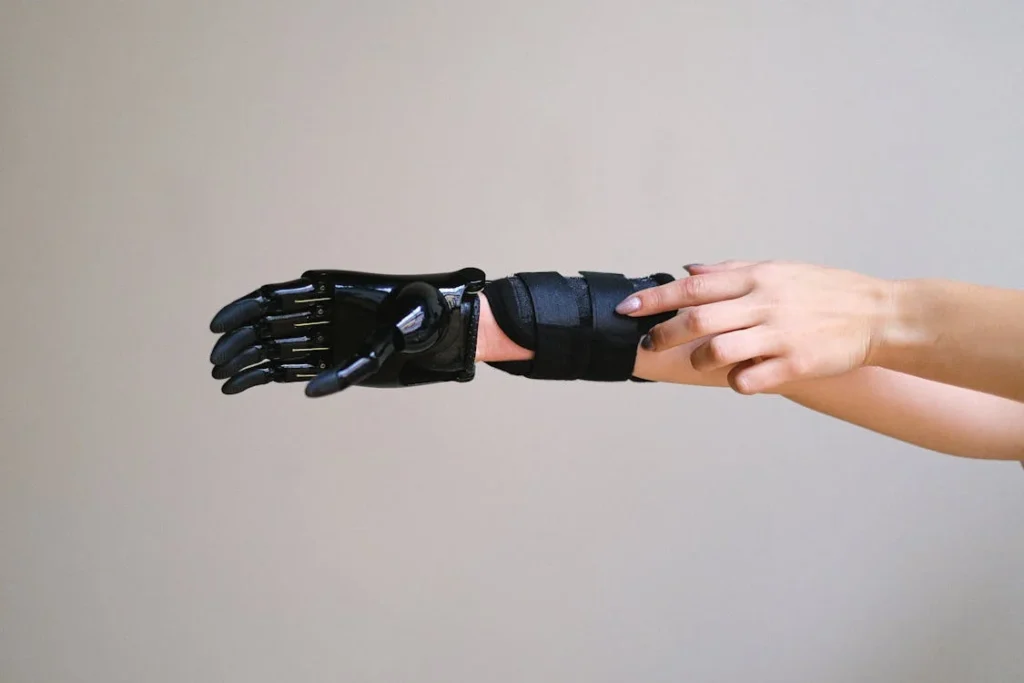
Building Habits That Stick Through Gamification
Why Repetition Needs a Reward
Doing something again and again is how we get better at it. But repetition without reward can feel like a grind. That’s true whether you’re brushing your teeth, learning a new skill, or training your body after an injury. When there’s no clear payoff, motivation fades. That’s why so many people give up before they see real change.
Gamification gives repetition a purpose. Each time someone performs a task, they earn something—points, badges, progress. These small wins turn boring routines into personal victories. That keeps people engaged longer. It keeps them moving forward.
At RoboBionics, we see this in action with our gamified rehab tools. Users who train with our app don’t just go through the motions. They push themselves to beat their own scores. They come back the next day to level up. They try again, even when they don’t have to. That’s the power of adding just a little reward to each effort.
Gamification creates what psychologists call a “feedback loop.” You do something, get rewarded, feel good, and want to do it again. Over time, this loop builds habits. And once a habit forms, it becomes automatic. That’s when progress really speeds up.
Creating a Sense of Progress and Purpose
One of the hardest things about physical therapy is that it often feels like you’re standing still. Recovery doesn’t always show up in big ways. You don’t go from zero to perfect overnight. Progress is slow. Invisible. And when you can’t see how far you’ve come, it’s easy to give up.
But when you gamify the process, every step gets counted. Every tiny improvement gets marked. Every day feels like a step toward something real. That changes how people feel about the work. Instead of frustration, they feel momentum. Instead of doubt, they feel purpose.
This is especially true for users of our Grippy™ Mech Hand or Grippy™ Bionic Hand. Learning to control a prosthetic hand using your own muscle signals can be tricky. But when that process is broken into clear, gamified milestones, it becomes manageable. You know exactly where you are and where you’re headed. That direction gives people clarity and hope.
And when people can see that they’re getting better—even by just a little each day—they stick with it. They don’t need to be forced. They want to continue.
Empowerment Through Choice and Control
Another powerful effect of gamification is that it gives users more control. In a game, you get to choose your path. You decide when to play, how to play, what to aim for. That freedom builds a sense of ownership. And ownership builds confidence.
When someone is recovering from an injury or adjusting to life with a prosthetic, they can sometimes feel like they’ve lost control. So giving them small choices—like choosing which task to do next or what goal to aim for—can make a huge difference. It gives back a sense of power. A feeling that says, “I’m in charge again.”
We’ve built this mindset into everything we create at RoboBionics. From the app to the hardware, we let users lead. They decide how much they want to push. They choose what success looks like. And every choice they make earns a reward.
That kind of positive reinforcement doesn’t just help with rehab—it helps people feel human again. It rebuilds dignity. It says, “You’re not broken. You’re in progress.”
From Game to Real Life: Lasting Motivation
One of the best parts of using gamification in prosthetic training is that it doesn’t stop when the game ends. The sense of growth and achievement starts to spill over into real life.
Imagine someone who has struggled for months to open a jar with one hand. After practicing with their Grippy™ hand and earning levels for grasping and holding objects, they suddenly realize they can do it. They’ve been training in the game—but the win happens in the kitchen. That real-life victory is more than just useful. It’s emotional. It’s empowering.
These moments of real-world success are what drive everything we do. The points and badges in the app aren’t just for show. They are stepping stones to real independence. To confidence. To joy.
We’ve heard from users who say the gamified training helped them rediscover things they thought were gone forever. Simple things like tying a shoelace or holding a pen. These may not sound like much to others, but for someone rebuilding their life, they mean everything. And those digital rewards? They were the sparks that lit the fire.
Why It’s Not Just for Kids or Gamers
Some people think gamification is only for children or video game fans. That’s not true. The power of rewards, progress, and goals is universal. It works for all ages. All walks of life. All journeys.
Whether someone is a teenager who lost a hand in an accident or a senior relearning movement after a stroke, gamification offers the same benefit: hope.
And hope, when combined with the right tools and support, becomes action. It becomes strength. That’s what we believe at RoboBionics. That’s why we’ve made gamification a key part of our mission.
We don’t just build bionic hands. We build a system that helps people feel proud again. A system that says, “You matter. Your effort matters. And every small win is a step toward something bigger.”
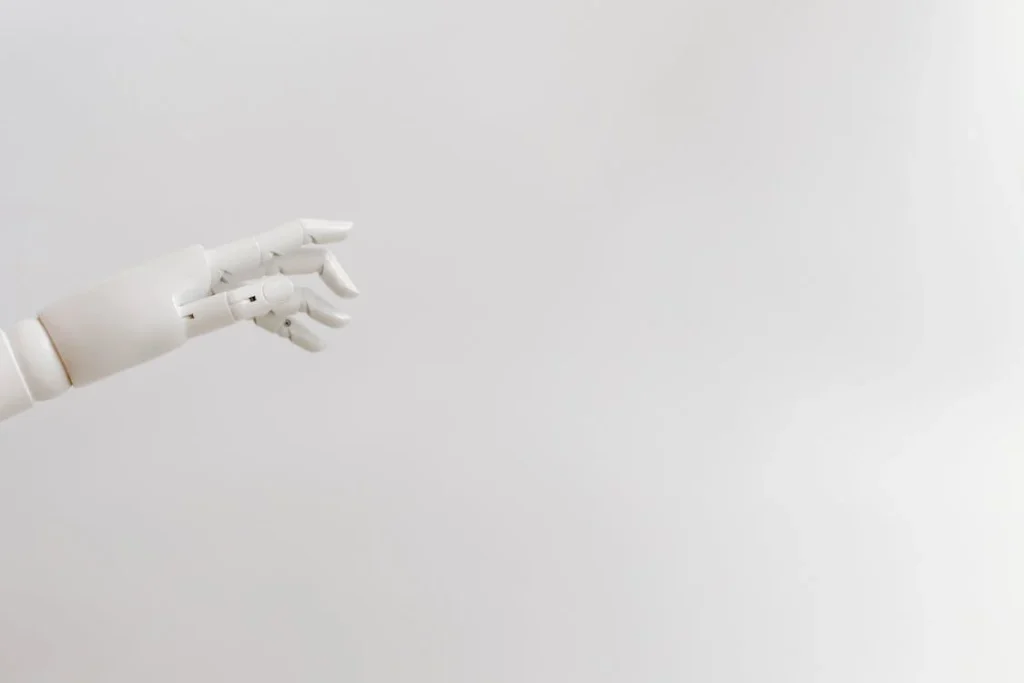
How Gamification Strengthens Recovery and Engagement
Turning Frustration into Motivation
One of the hardest parts of rehabilitation is dealing with frustration. Learning to move again, especially with a prosthetic limb, is tough. Things that used to be simple—like picking up a spoon or tying your shoes—can suddenly feel impossible. And when progress feels slow, frustration can quickly turn into defeat.
Gamification flips that. Instead of focusing on what you can’t do yet, it shows you what you’ve already achieved. It gives you reasons to keep going. Each point you earn, each badge you unlock, tells you that you’re moving forward. That shift in focus can completely change your attitude. You stop saying, “I can’t do this,” and start saying, “I’m getting there.”
We see this transformation in many of our users. The Grippy™ Mech Finger and Grippy™ Mech Hand are designed to give back movement and function. But without belief in themselves, people can struggle to stay committed to training. Once we add gamified goals into the picture, that hesitation fades. People light up. They push through the hard parts. They surprise themselves. All because the game makes it feel like progress is not only possible—it’s happening right now.
Engagement That Lasts
Many rehab programs start strong, but people often drop off. They get bored. They get tired. They stop showing up. But when rehab feels like a game? That changes everything. Suddenly, it’s not a task—it’s a challenge. A mission. Something to look forward to.
The secret is in how gamification holds attention. It breaks big goals into small, achievable steps. It gives users something to look forward to each time they return. Maybe it’s a new level. Maybe it’s a surprise badge. Maybe it’s beating their best score. That little push to “see what’s next” is incredibly powerful.
In our rehab app, we’ve seen this firsthand. People don’t just do the minimum. They explore. They experiment. They engage. And this deeper connection leads to better results. It turns users into participants. They become active in their own healing.
This is where gamification becomes more than a tool—it becomes a bridge. A bridge between effort and outcome. A bridge between trying and believing.
The Science of Positive Reinforcement
It’s not just about fun. There’s real science behind why gamification works so well. When people are rewarded for doing something—even something small—their brains connect that action with pleasure. This is called positive reinforcement. It’s how habits form and how behavior changes over time.
Gamification uses this principle with great effect. When someone completes a challenge in the app or performs a task with their prosthetic hand, the app rewards them. Maybe it’s a visual celebration. Maybe it’s a new title. Maybe it’s points. Whatever the form, that reward locks in the behavior. It tells the brain, “Do this again.”
Over time, this builds stronger neural pathways. Movements become smoother. Control improves. And most importantly, confidence grows. That’s what we aim for with every tool we build at RoboBionics. Because confidence is the key that opens the door to independence.
Emotional Wins Are Just as Important
When someone uses a bionic hand for the first time, it’s more than just physical. It’s emotional. It’s a reminder of what was lost—and what’s possible to regain. That moment carries a lot of weight.
Gamification can soften this emotional load. Instead of focusing on what’s missing, it helps people focus on what’s next. Each new level, each earned badge, each completed goal becomes a celebration. Not just of ability, but of resilience. Of courage.
We often hear from users who didn’t think they’d ever feel proud again. But then they earned their first badge. They completed their first challenge. They saw their name rise in the app’s leaderboard. And for the first time in a long time, they smiled. They felt seen.
These emotional wins matter just as much as physical ones. Because healing isn’t just about movement—it’s about mindset. It’s about feeling like yourself again. Feeling hopeful again.
A Sense of Belonging Through Shared Progress
Gamification doesn’t have to be a solo journey. In fact, some of its greatest strengths come from connection. When people can see how others are progressing—or share their own wins—they feel part of something bigger.
That’s why we’ve started adding social features to our platforms. Users can share their scores. Celebrate each other’s badges. Cheer each other on. These little moments of connection create a sense of belonging. They remind users they’re not alone.
And when people feel part of a community, they push harder. They support one another. They celebrate together. That shared journey can make all the difference in how long someone sticks with their rehab and how far they go.
This kind of emotional support, sparked by a few digital rewards, builds real-world relationships. And relationships are what turn tools into transformation.
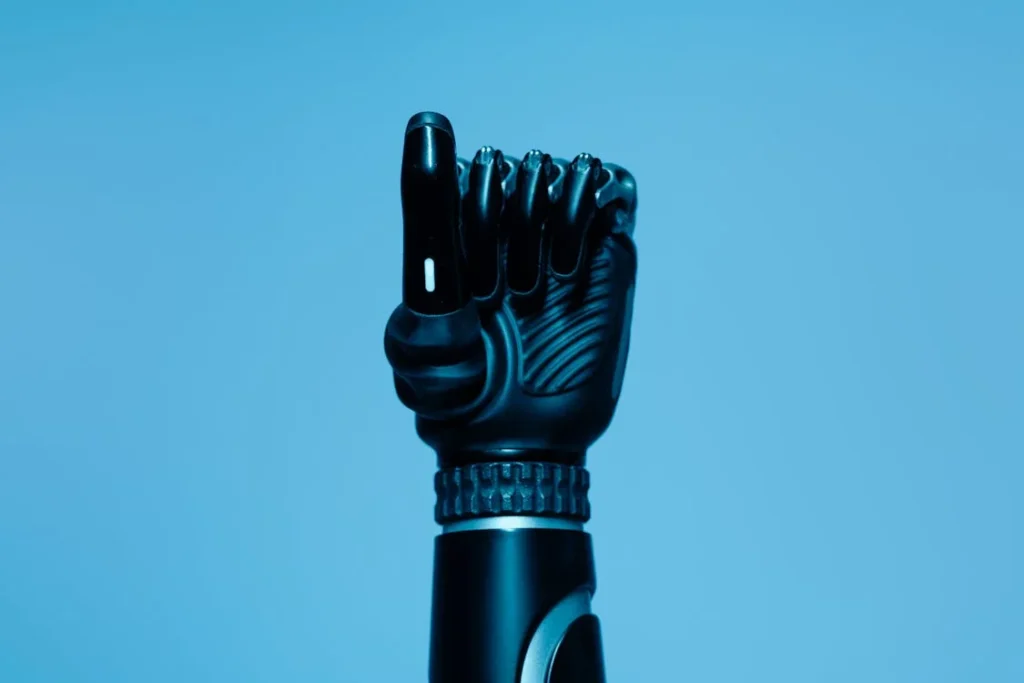
How Gamification Helps Rewire the Brain
The Brain Learns Through Repetition and Feedback
The human brain is amazing. It constantly changes and adapts. This ability is called neuroplasticity. It means that even after an injury, the brain can form new connections and relearn skills. But here’s the catch—it needs the right kind of input. It needs repetition, focus, and feedback.
That’s exactly what gamification provides.
When someone plays a game or uses a gamified rehab tool, they repeat the same actions over and over. But because they’re getting feedback—points, scores, levels—it doesn’t feel boring. It feels exciting. That excitement keeps the brain engaged. It encourages learning. It drives the person to keep trying.
This is why gamified rehab works so well with prosthetic training. Every movement sends a signal to the brain. Every reward helps that signal stick. The more the user trains with their Grippy™ bionic hand, the more the brain learns to control it naturally. It’s like rewiring the system—and gamification is the spark.
Gamified Rehab Is Like Brain Gym for Users
When we think about exercise, we usually think about muscles. But the brain needs exercise too—especially after trauma or amputation. Gamification gives the brain that workout. Every challenge in the rehab app is carefully designed to trigger both physical movement and mental engagement.
Take our users, for example. When they perform tasks using their Grippy™ Bionic Hand, they’re not just moving their fingers. They’re solving problems. They’re aiming for targets. They’re learning timing, pressure, and control. That’s brain training.
And because it’s wrapped in a game-like format, users don’t feel overwhelmed. They don’t even realize they’re doing complex rehab. It just feels like play. But underneath that play, the brain is hard at work—rebuilding skills, forming new patterns, and unlocking potential that once felt lost.
Tracking Micro-Movements for Macro Impact
One of the hidden powers of gamification is how it tracks the little things. In traditional rehab, many small movements go unnoticed. They aren’t counted or celebrated. But in a gamified environment, every action matters.
Let’s say a user practices gripping with different strengths. The app can detect and reward subtle improvements. Maybe the grip is steadier. Maybe the hold is longer. Maybe the release is smoother. These tiny shifts are signs of major progress.
And when the system responds with encouragement—a flash of light, a boost in score, a new badge—it tells the user, “You’re doing great.” That affirmation keeps them going. It gives them data. It helps them understand their own progress.
At RoboBionics, we’ve put a lot of effort into making sure our gamified tools can track these micro-movements. We want every win, no matter how small, to be seen and celebrated. Because when someone feels that their effort matters, they don’t give up. They keep reaching, keep stretching, keep growing.
Reducing the Fear of Failure
Fear can be a huge barrier to progress. Many people worry about getting things wrong, especially in rehab. They fear pain, they fear judgment, and they fear failure. That fear can freeze them. It can stop them from even trying.
Gamification takes the pressure off.
In a game, failure doesn’t hurt. It just means, “Try again.” There’s always another round. Another chance. This makes people more willing to experiment. They try new movements. They take more risks. They test their limits. And that’s how they grow.
In our rehab tools, we create a safe space for this exploration. There’s no “wrong.” There’s only learning. When someone can approach their prosthetic training with curiosity instead of fear, they go farther—and feel better doing it.
This emotional safety net is one of gamification’s greatest strengths. It makes hard work feel doable. It turns fear into fun.
Real Results, Real People, Real Change
At RoboBionics, we’ve seen lives transformed—not just because of our devices, but because of the experiences we build around them. The Grippy™ Bionic Hand, the Mech Hand, the Mech Finger—each of these tools is powerful on its own. But when paired with gamified rehab, they become something more. They become a gateway to confidence. To movement. To a new life.
We’ve watched users go from barely moving a finger to completing full object manipulation tasks. We’ve seen people who once hid their hands in public now showing them off with pride. The change isn’t just physical—it’s personal. It’s emotional. It’s human.
Gamification fuels that journey. It keeps people engaged. It shows them what’s possible. It says, “You can do this,” over and over, until they believe it themselves.
And that belief—that hope—is the real game-changer.

Why Gamification Works So Well in Prosthetic Rehabilitation
Myoelectric Mastery Made Simple
One of the most amazing features of our Grippy™ Bionic Hand is that it responds to myoelectric signals. That means it listens to the natural signals coming from your muscles. When you flex a muscle, the hand moves. It’s science turned into something magical.
But here’s the thing—controlling a bionic hand like this isn’t easy at first. It’s like learning to ride a bike again, but using your muscles in new ways. It takes practice, patience, and precision. That’s where gamification becomes essential.
When users train with our gamified app, they learn to control their muscle signals through repeated, meaningful tasks. Instead of just opening and closing the hand over and over, they’re playing games. They’re unlocking targets. They’re timing their moves to match a goal. They’re practicing without even realizing it.
This kind of training builds muscle memory and brain connection at the same time. With every session, users get more control. The hand starts to feel like a part of them again. That sense of natural control is what we call “intuitive function”—and gamification is the key that unlocks it.
Confidence in Every Click
When someone loses a limb, it’s not just the physical loss that hurts. It’s the emotional impact too. Many people feel like they’ve lost a part of themselves. They may feel different. Shy. Unsure. Using a prosthetic for the first time can feel intimidating.
That’s why we focus so much on building confidence. The moment someone earns their first badge in our app, something shifts. They smile. They feel proud. They want to do more. That one moment becomes a spark. It reminds them of who they are—and what they can still do.
Gamification isn’t just about games. It’s about giving people back their confidence, one small win at a time. And when someone feels confident, they’re more willing to try, to push, to grow. Confidence isn’t just a feeling—it’s fuel.
Breaking Down Big Goals Into Smaller, Joyful Steps
Rehabilitation is a long journey. And long journeys can feel overwhelming. If someone thinks they have to go from zero to perfect right away, they might quit before they begin. That’s why breaking the journey into small, joyful steps is so powerful.
Gamification makes this possible. Instead of saying, “Learn to use your prosthetic,” we say, “Let’s beat today’s challenge.” Instead of saying, “Practice your grip,” we say, “Can you catch all the falling stars?” Each goal is small. Achievable. Fun. But together, these small wins add up to real mastery.
This strategy works because it changes how people feel about hard work. It removes the pressure and replaces it with play. People don’t even realize how far they’ve come—until they look back and see everything they’ve unlocked.
That’s when the magic happens. That’s when someone who once doubted themselves now says, “I did that.”
Progress You Can See—and Celebrate
Another big benefit of gamification is visibility. Often in recovery, progress is slow. People don’t see results right away. That can be discouraging. But with gamification, every little step is visible.
In our app, users can track their growth. They can see how many tasks they’ve completed. How many points they’ve earned. What their fastest time is. All of this data becomes a mirror that reflects their effort. And that reflection is powerful.
When someone sees their progress, they feel proud. They feel capable. And they feel hungry for more. That sense of visible progress builds momentum. And momentum is what carries people through the hard days.
We celebrate these milestones with users. Whether it’s a new level, a personal best, or just showing up three days in a row, it matters. We cheer them on because we know every win, no matter how small, deserves recognition.
Bringing Families Into the Journey
One beautiful thing we’ve discovered is that gamification doesn’t just help users—it helps their families too. When rehab is a game, it becomes easier for loved ones to participate. Parents, spouses, and even kids can join in, encourage, and celebrate together.
We’ve had families who take turns with the app, helping each other train. We’ve seen children cheering as their mom completes a tough level. We’ve heard stories of siblings turning practice into a friendly competition.
This sense of togetherness adds a powerful emotional layer. It transforms rehab from a lonely chore into a shared experience. And when people feel supported, they do better. They stay stronger. They heal faster.
Gamification creates this connection. It brings people together in ways that go far beyond the screen.
Healing With Dignity, Joy, and Technology
At RoboBionics, we don’t just make devices. We create experiences that heal. We build tools that are powered by science but fueled by human spirit. Our goal is to give people more than movement—we want to give them back their spark.
Gamification is one of the most important ways we do that. It turns tough tasks into joyful moments. It turns training into adventure. It turns recovery into something that’s not just possible, but exciting.
And most importantly, it gives our users something they may not have had in a long time—fun.
Because when healing feels joyful, when effort is rewarded, and when progress is visible, people keep going. They show up. They believe in themselves. They smile again.
That’s what we’re here for. That’s what makes it all worth it.
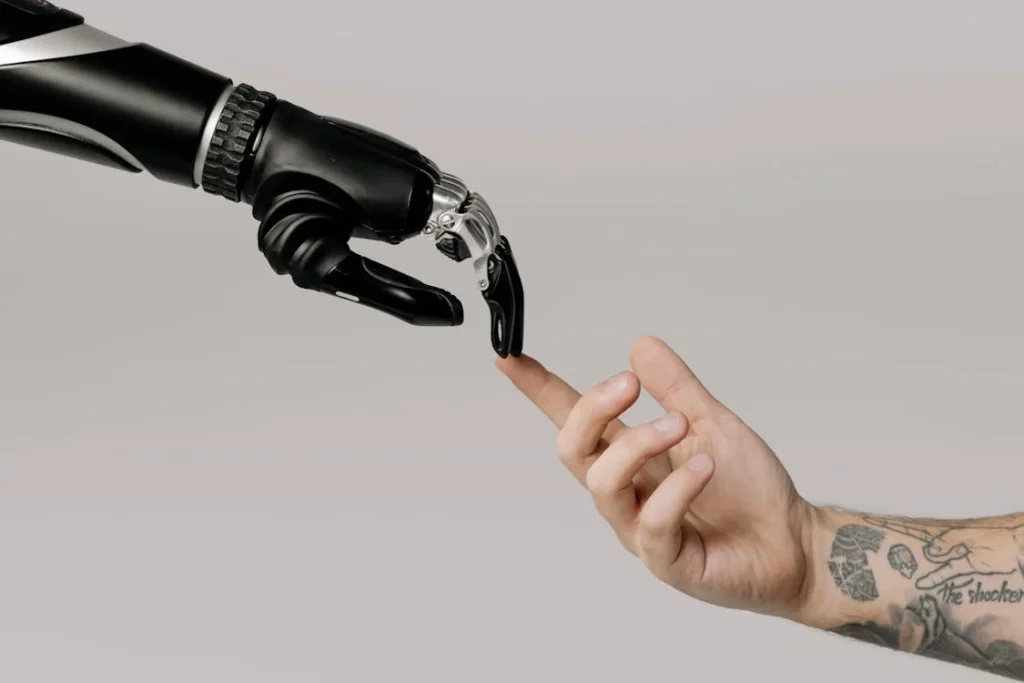
From Game to Life: Building Lasting Independence with Gamification
Why Short-Term Rewards Lead to Long-Term Change
At first glance, gamification might look like a short-term trick. Points. Levels. Badges. A bit of fun to keep people going. But when used with purpose, gamification plants seeds that grow into something much bigger—real, lasting change.
That’s because what starts as a fun challenge can turn into a powerful routine. The repetition builds skills. The rewards build confidence. The structure builds discipline. Over time, what began as a simple game becomes part of a person’s identity. They start to think, act, and move with more intention. They become more independent—not just with their body, but with their mindset.
We’ve seen this happen many times at RoboBionics. Someone who once needed constant support becomes someone who leads their own progress. Someone who hesitated to try new things becomes someone who sets their own challenges. That shift—when a person takes ownership of their recovery—is when true transformation begins.
Gamification doesn’t just change what people do. It changes how they see themselves.
When the Game Ends, the Habits Stay
A well-designed gamified system fades into the background over time. It’s like training wheels. You don’t use them forever—but they help you get started. They help you feel stable. And once you’re moving, you don’t need them anymore.
That’s exactly how our gamified rehab works.
In the beginning, users need the structure. They rely on the app for direction, for motivation, for feedback. But as they grow, the game becomes less about points and more about purpose. They begin doing the exercises because they want to—not because the app tells them to. They begin pushing themselves because they’ve learned how good progress feels.
The app doesn’t just train the body. It teaches discipline. It builds awareness. It helps users recognize their own limits—and push past them.
Eventually, users stop thinking of it as a game. It becomes a routine. A way of life. And the best part? That independence stays with them, long after the app is turned off.
Unlocking the Power of Self-Motivation
Self-motivation is one of the hardest things to build—especially when you’re facing something as big as adapting to life with a prosthetic. But once that spark is lit, it fuels everything.
Gamification is a bridge to self-motivation. At first, it gives people external reasons to act. Complete a task, earn a reward. Do more, win more. But eventually, something shifts inside them. They stop asking, “What do I get if I do this?” and start saying, “I want to see how far I can go.”
That shift from external to internal motivation is huge. It’s when healing turns into thriving. It’s when recovery becomes growth. It’s when someone truly takes charge of their future.
We’ve seen users return to our app long after their official rehab period ended. Not because they have to—but because they want to. They’re hungry to improve. To experiment. To push the boundaries of what they thought was possible.
That’s not just motivation. That’s empowerment.
Making the Invisible Visible: Tracking Personal Growth
One of the most beautiful gifts of gamification is visibility. So many changes during recovery are invisible. You can’t always see your muscles getting stronger. You can’t always feel your brain rewiring itself. But with a gamified system, those small wins are brought into the light.
Every point, every badge, every progress bar tells a story: “You did something today. You showed up. You tried.” Over time, these small wins create a full picture of personal growth.
And when someone looks back and sees how far they’ve come, it’s powerful. They realize that even on days when they felt like they weren’t making progress—they were. That realization fuels pride. It deepens commitment. It helps people see themselves as strong, capable, and resilient.
At RoboBionics, we believe that healing isn’t just about repairing the body. It’s about restoring dignity. And dignity comes from knowing, deep down, that you’re moving forward—even when the steps feel small.
Conclusion
Gamification may seem like play—but it’s so much more. For someone learning to use a prosthetic or rebuilding their strength, points, badges, and levels offer something deeper: motivation, direction, and hope. They turn effort into progress and progress into pride.
At RoboBionics, we don’t just build bionic hands—we build tools for human empowerment. Our gamified rehab systems help people push past fear, rediscover joy, and take control of their future. Because when recovery feels like a game, people don’t just try harder—they believe again.
And that belief? That’s where real healing begins.
Ready to experience it for yourself or someone you care about?
Book a demo with RoboBionics today.
Let’s turn small wins into life-changing victories.



